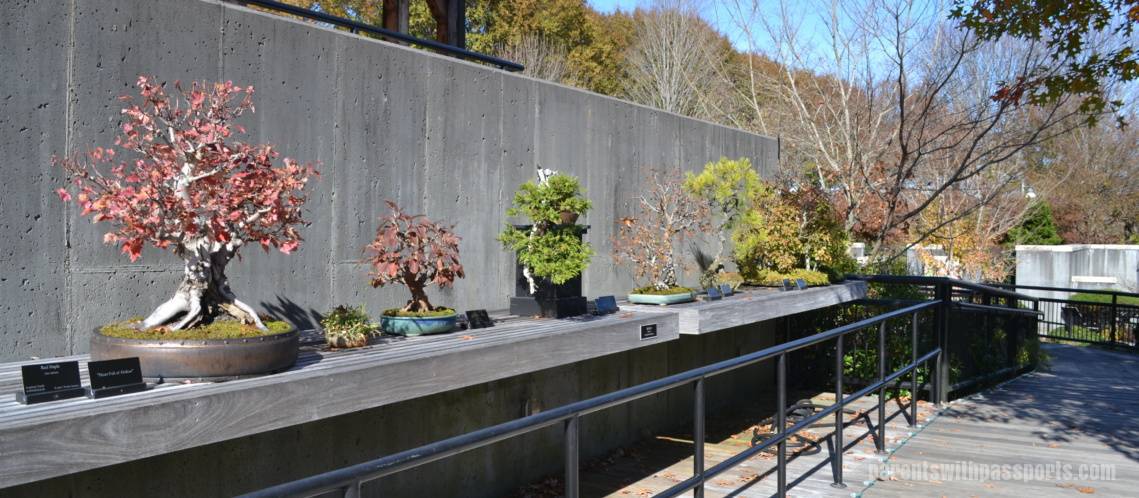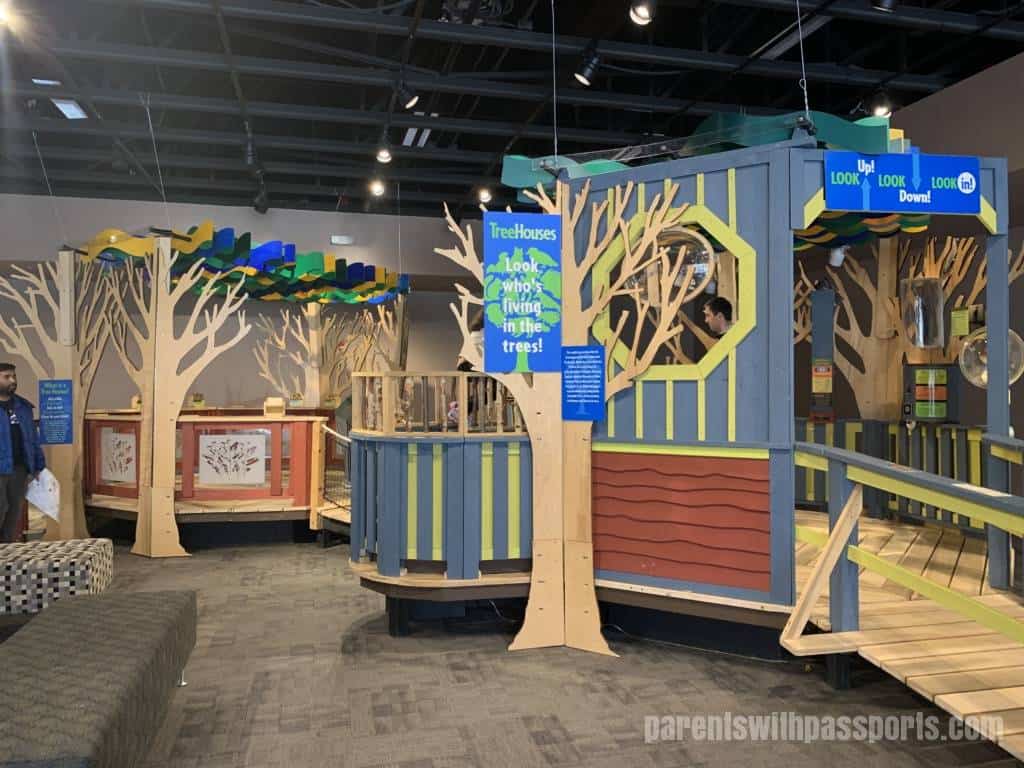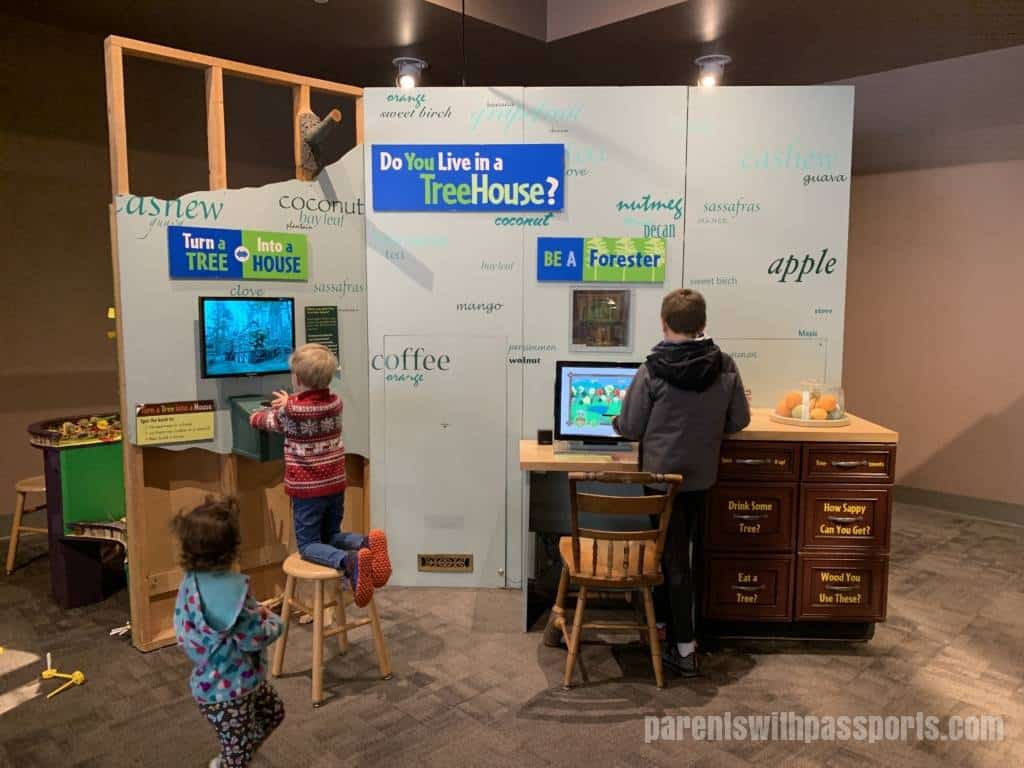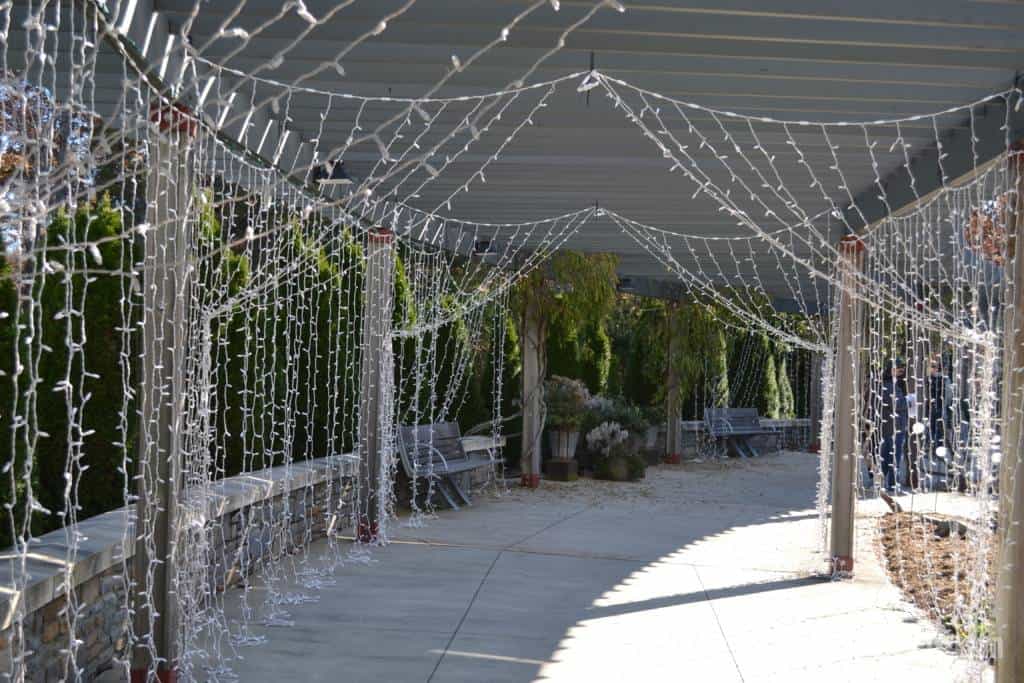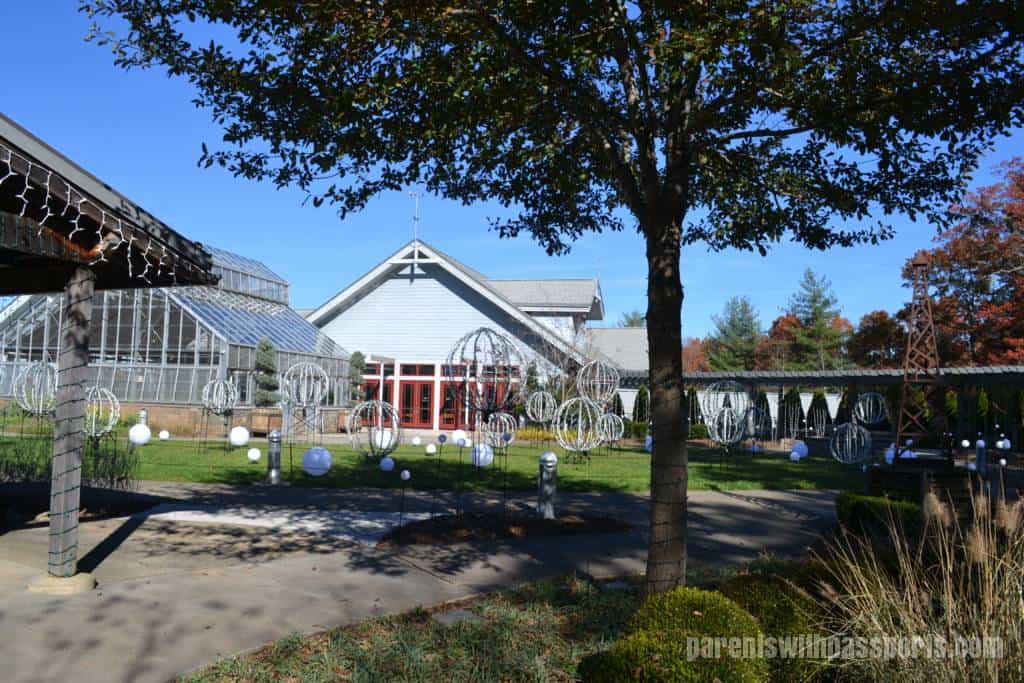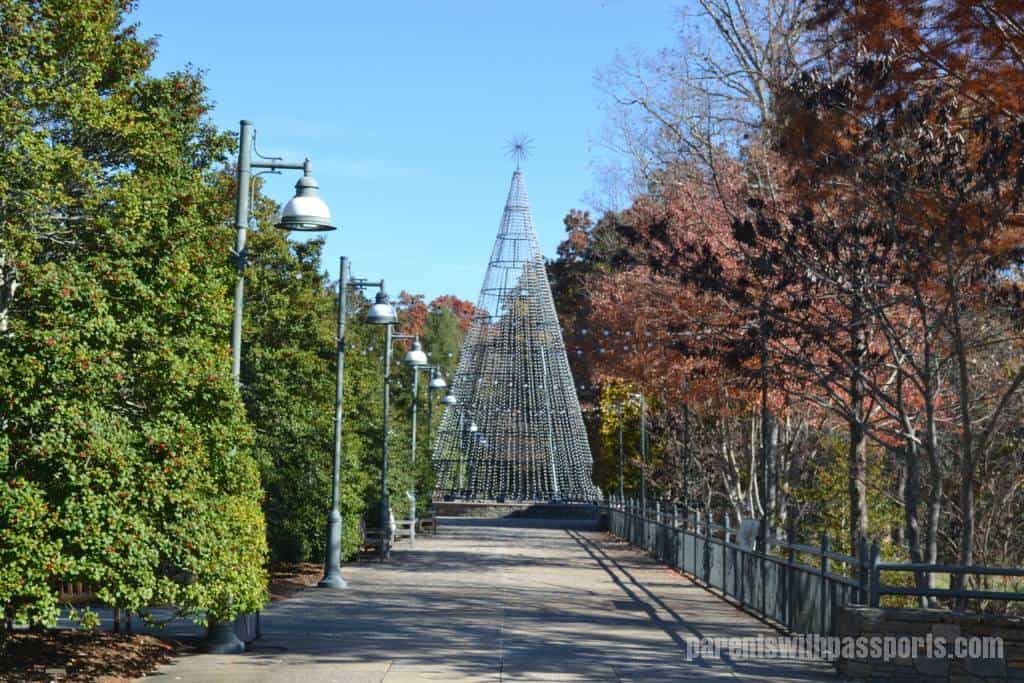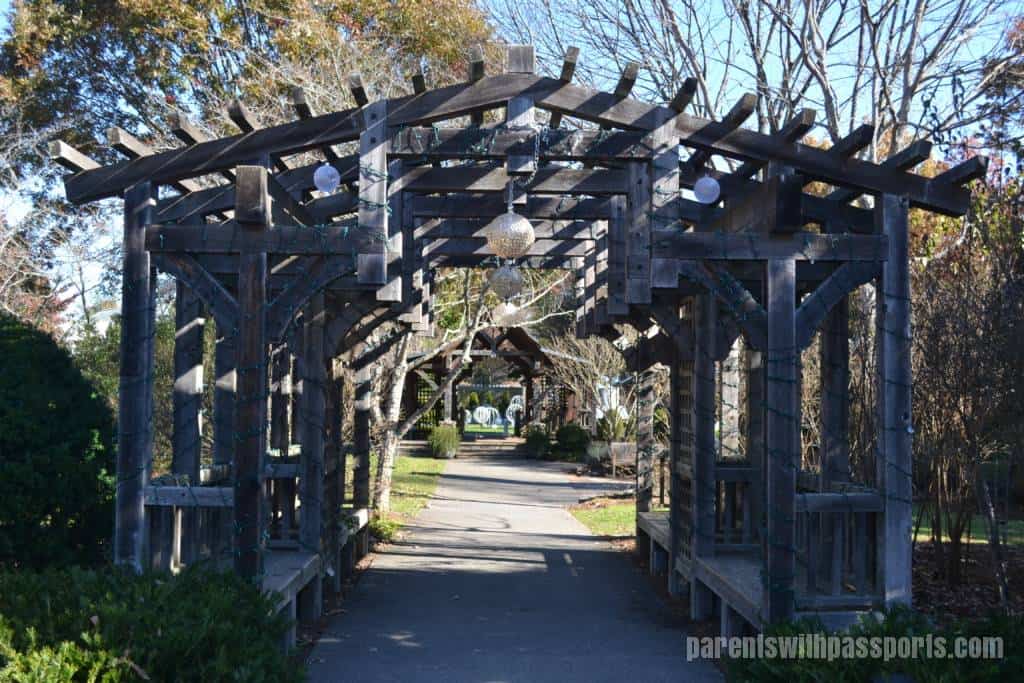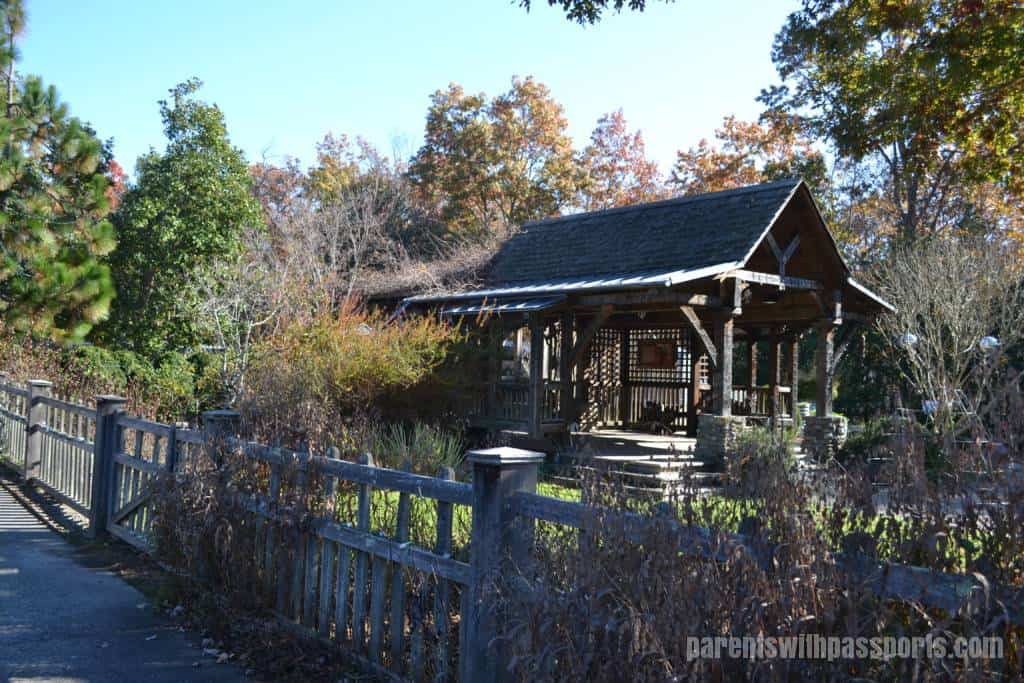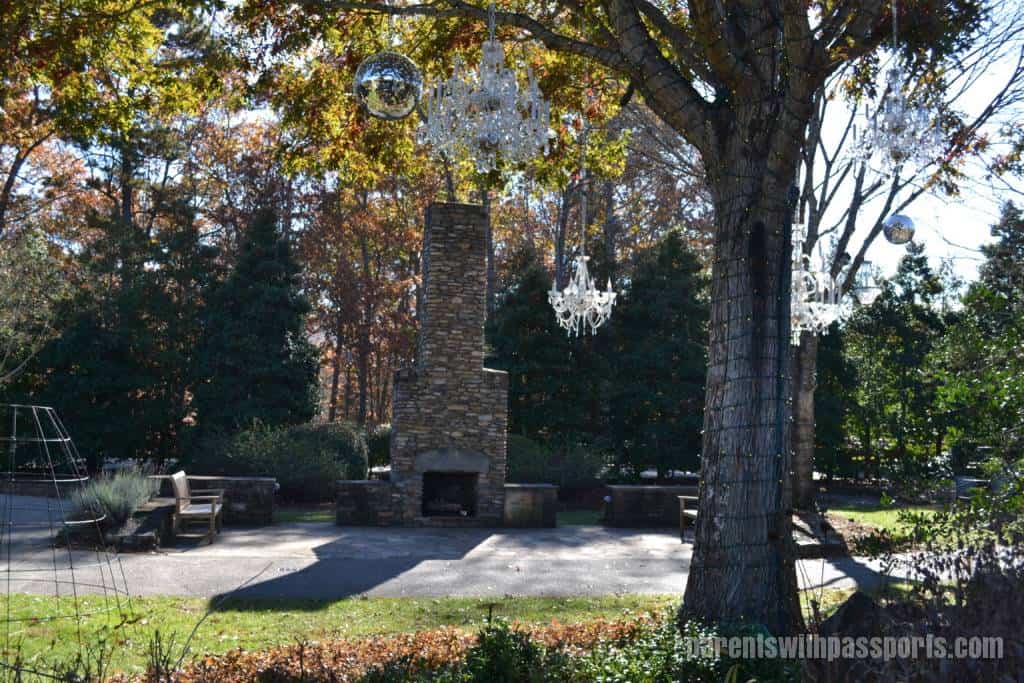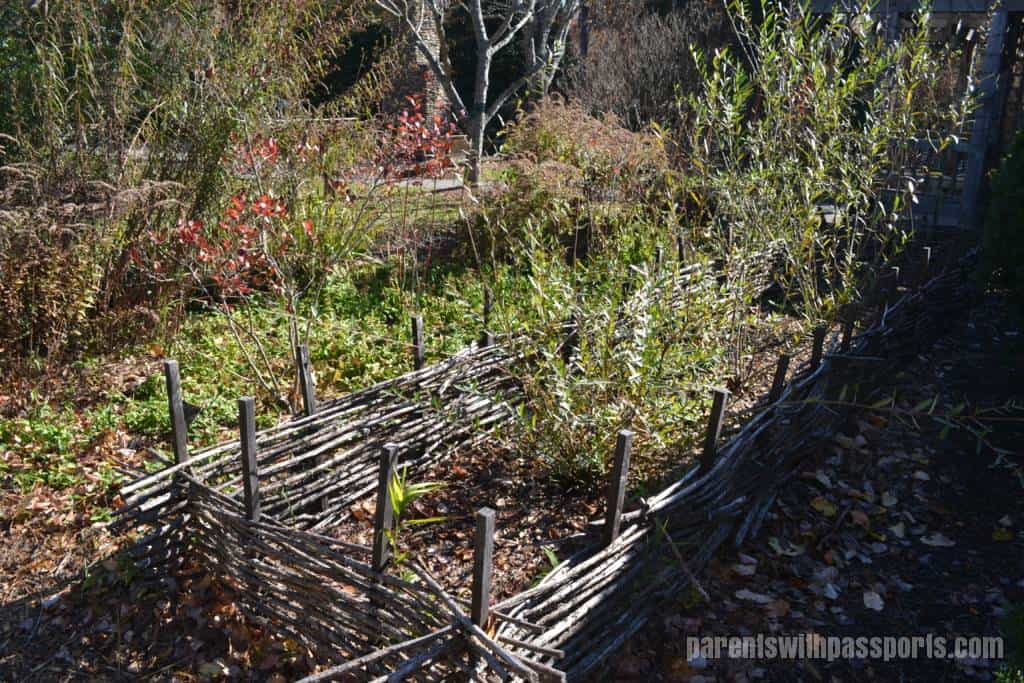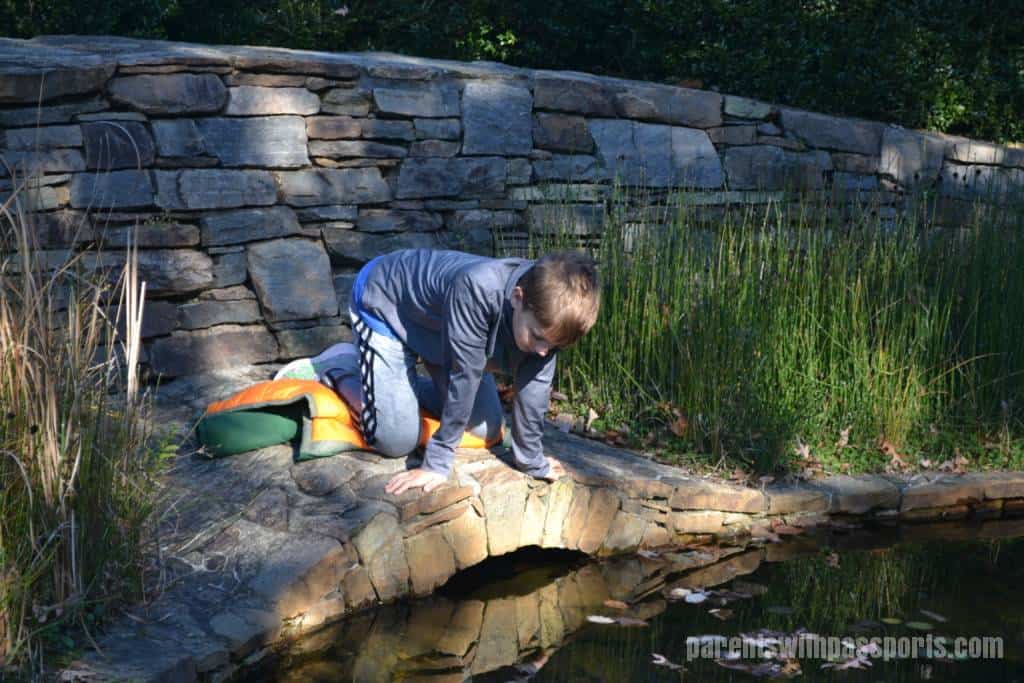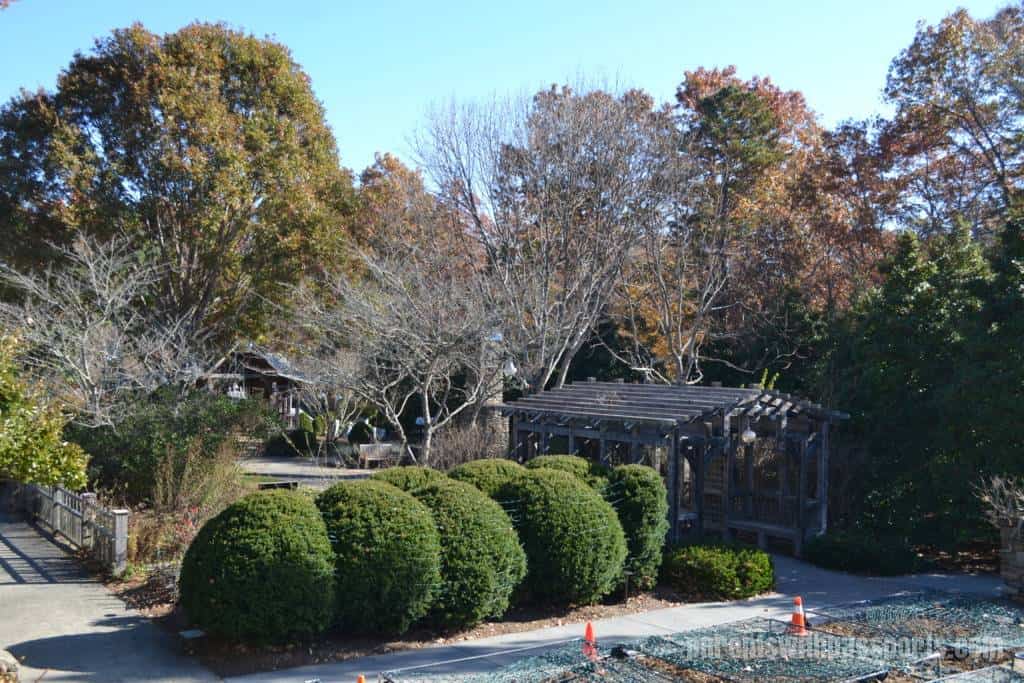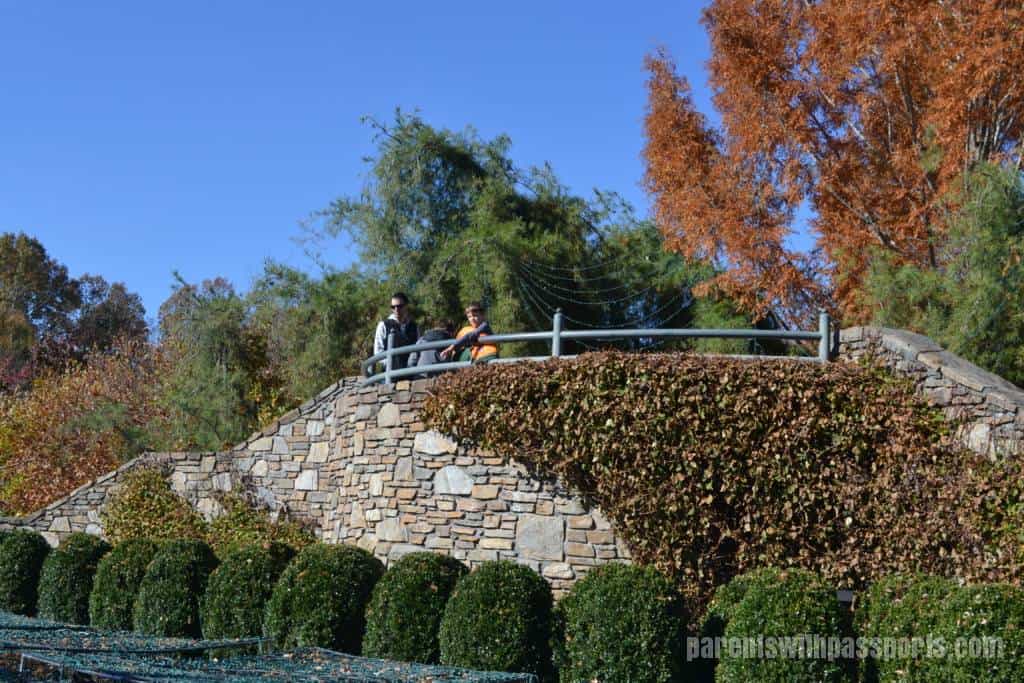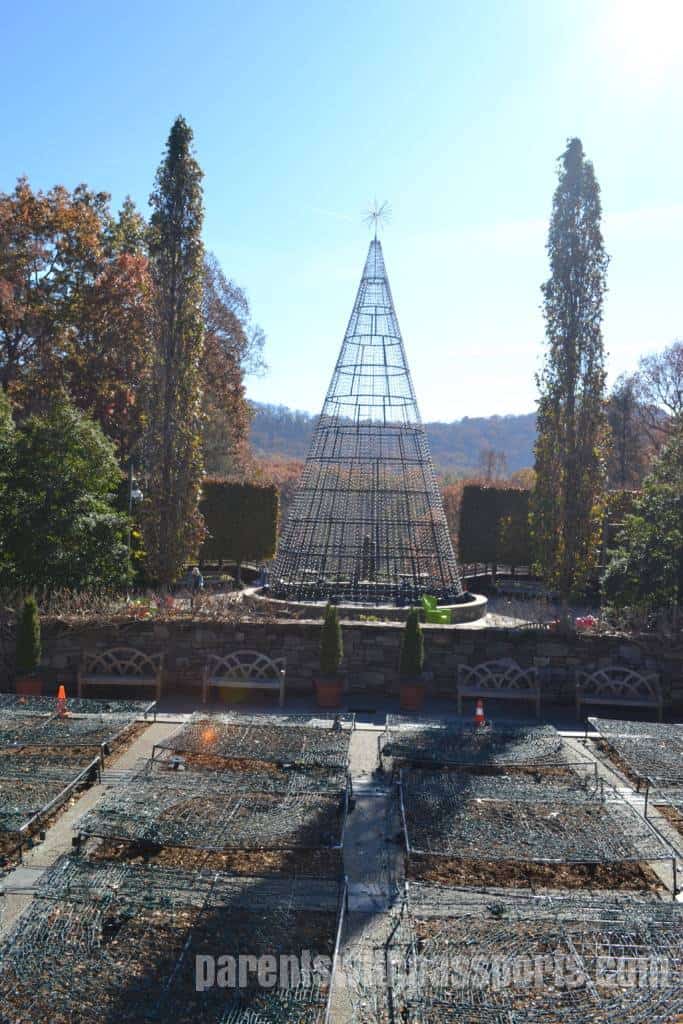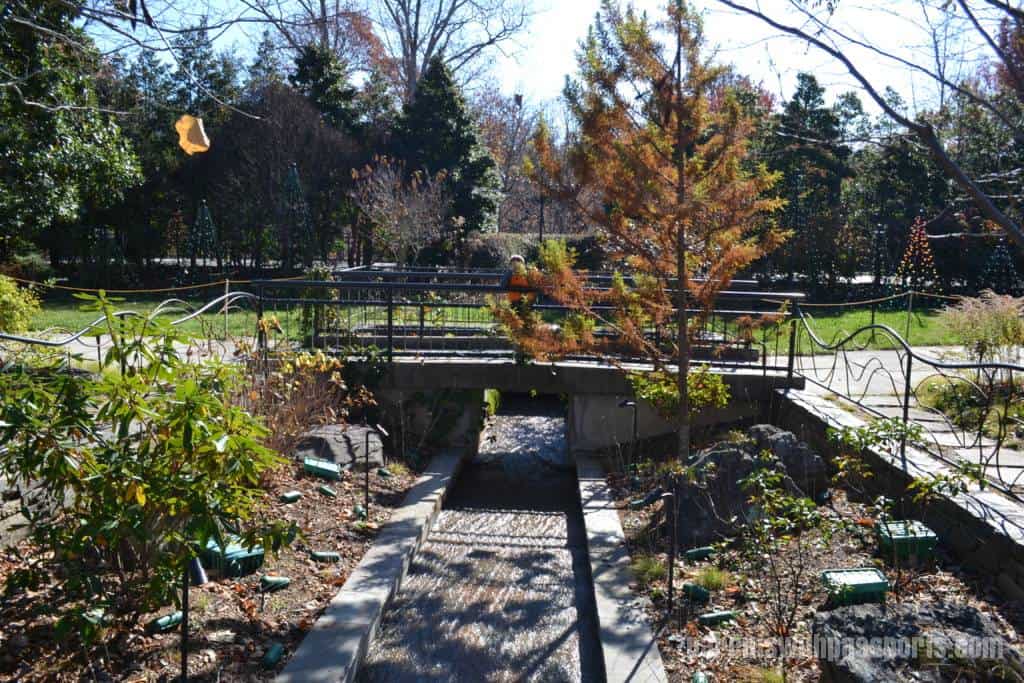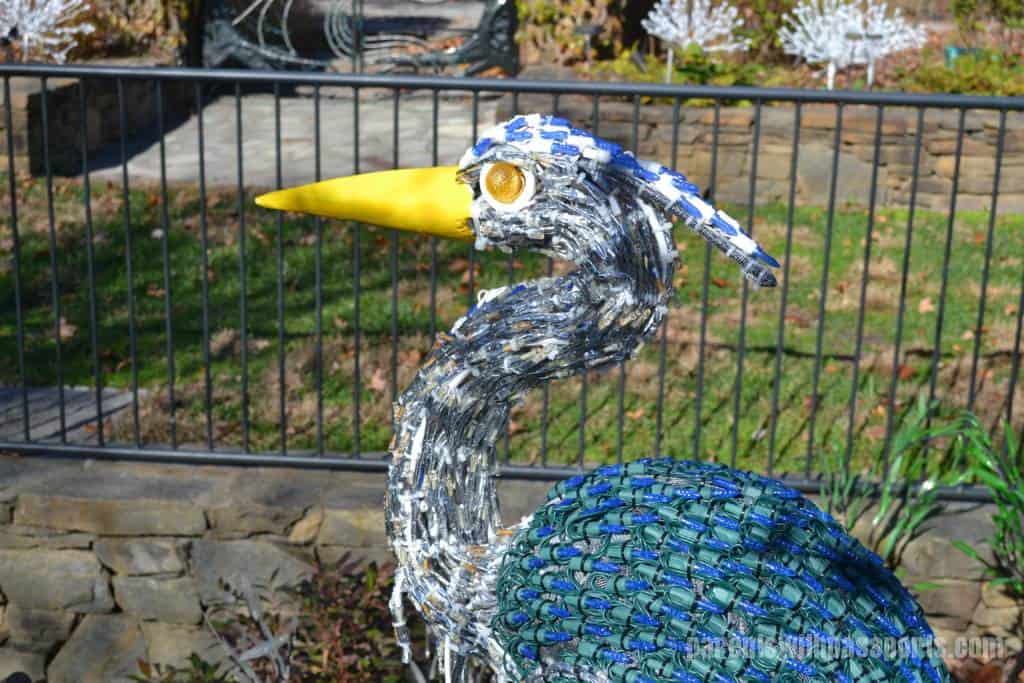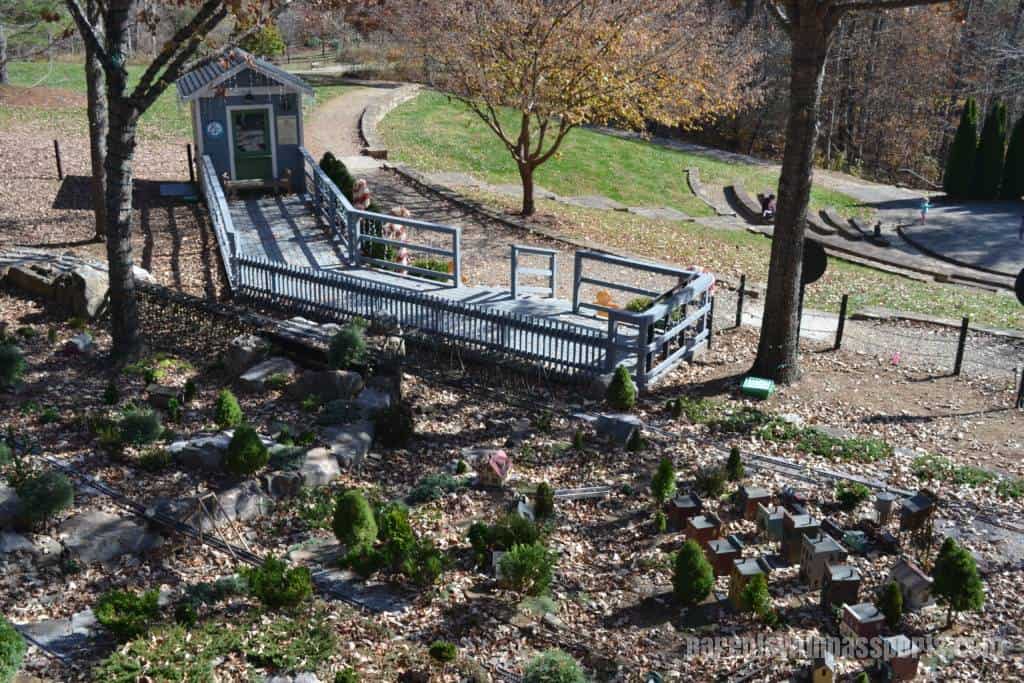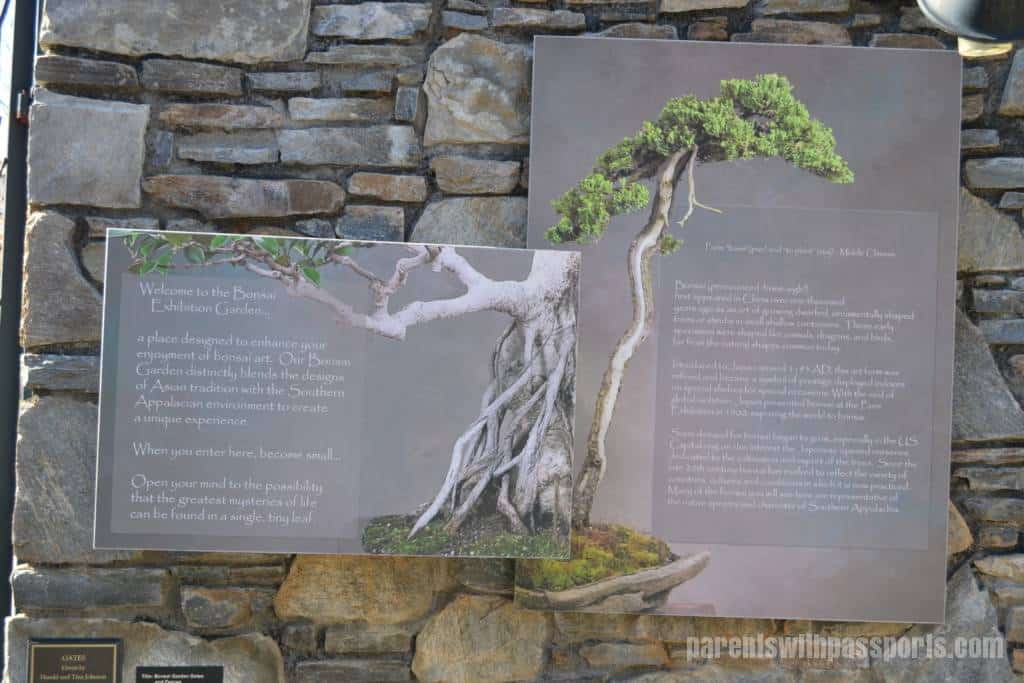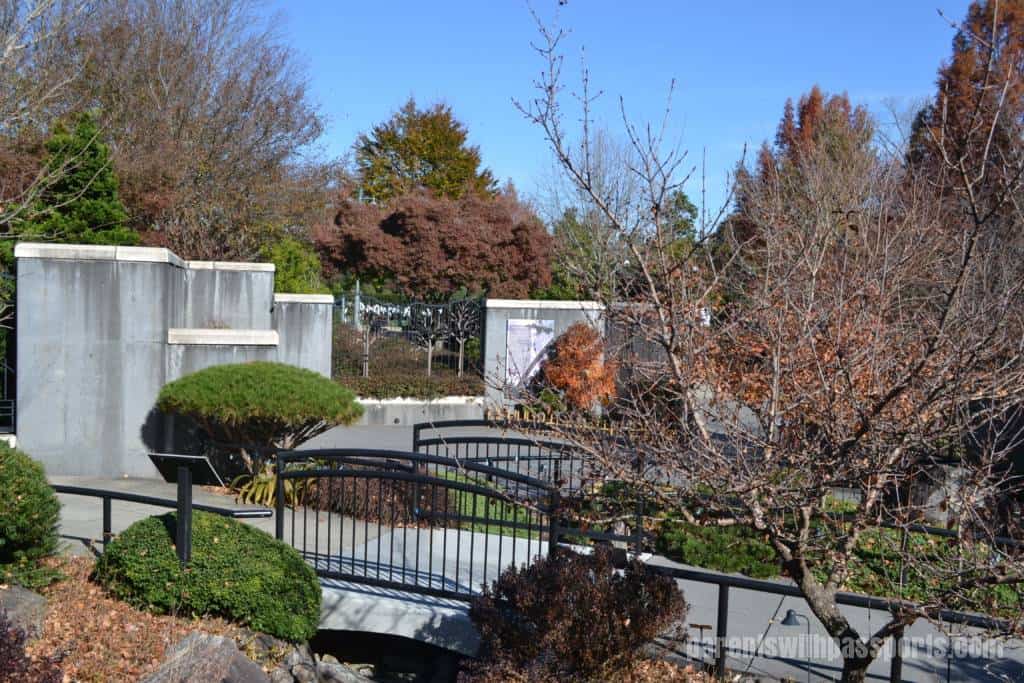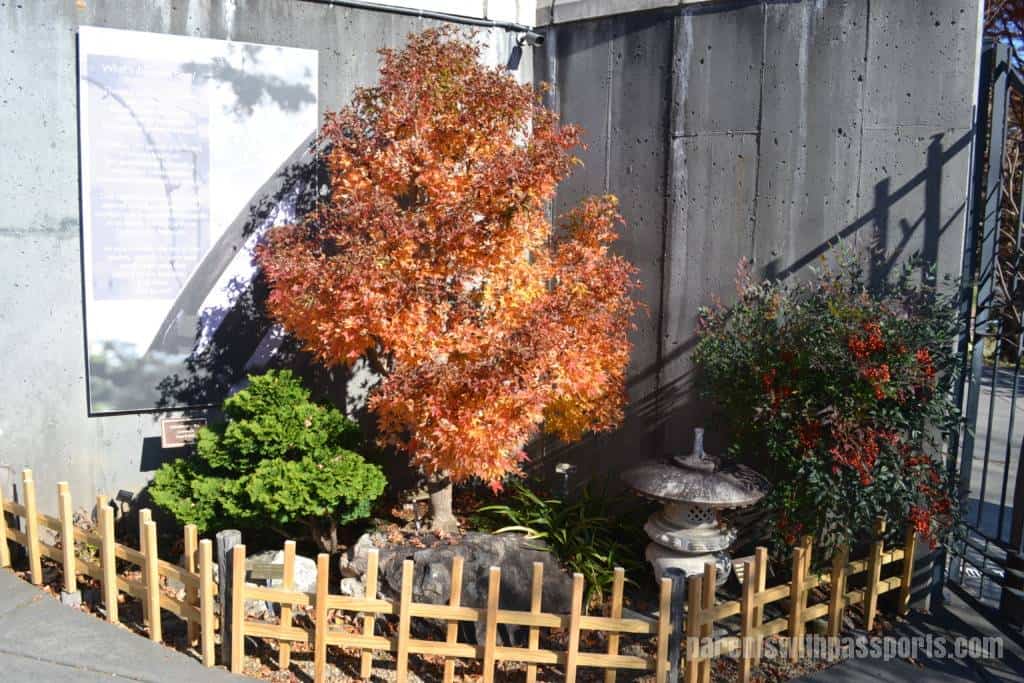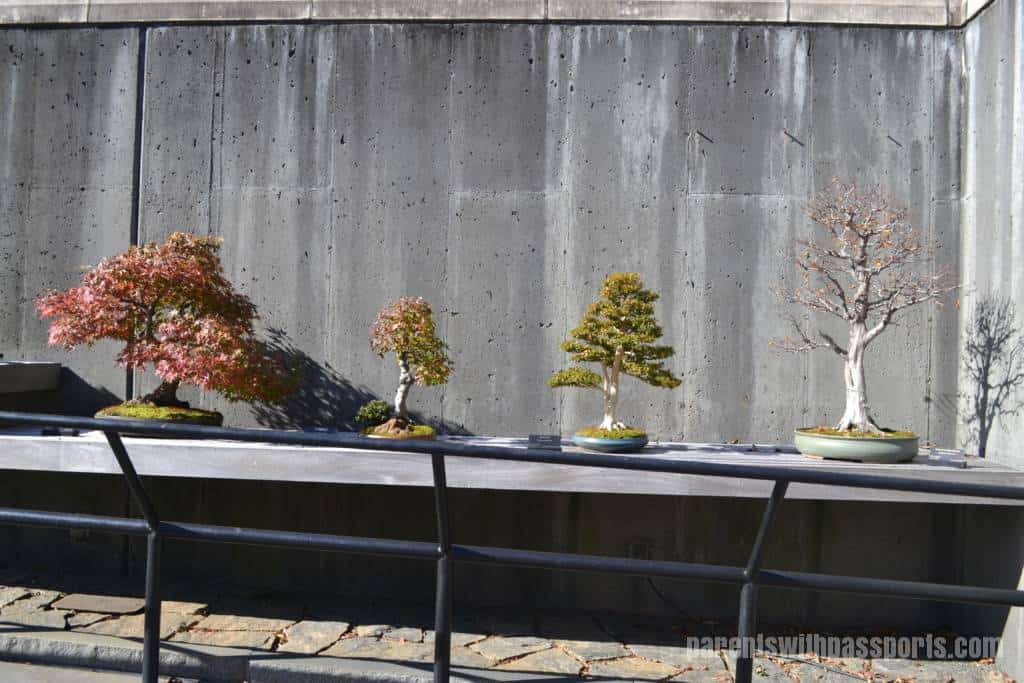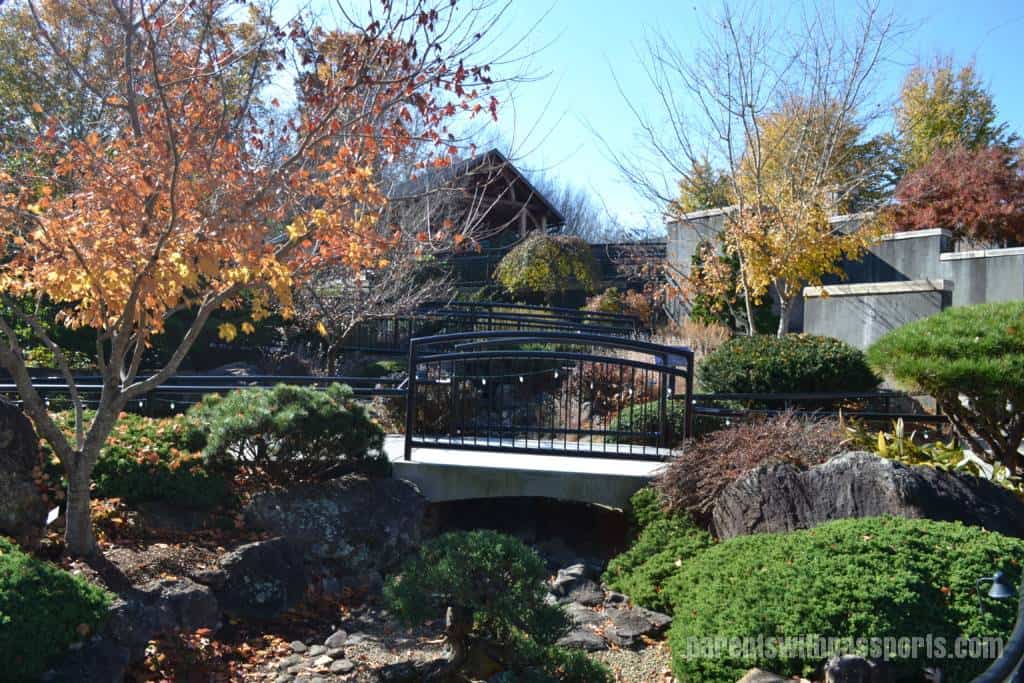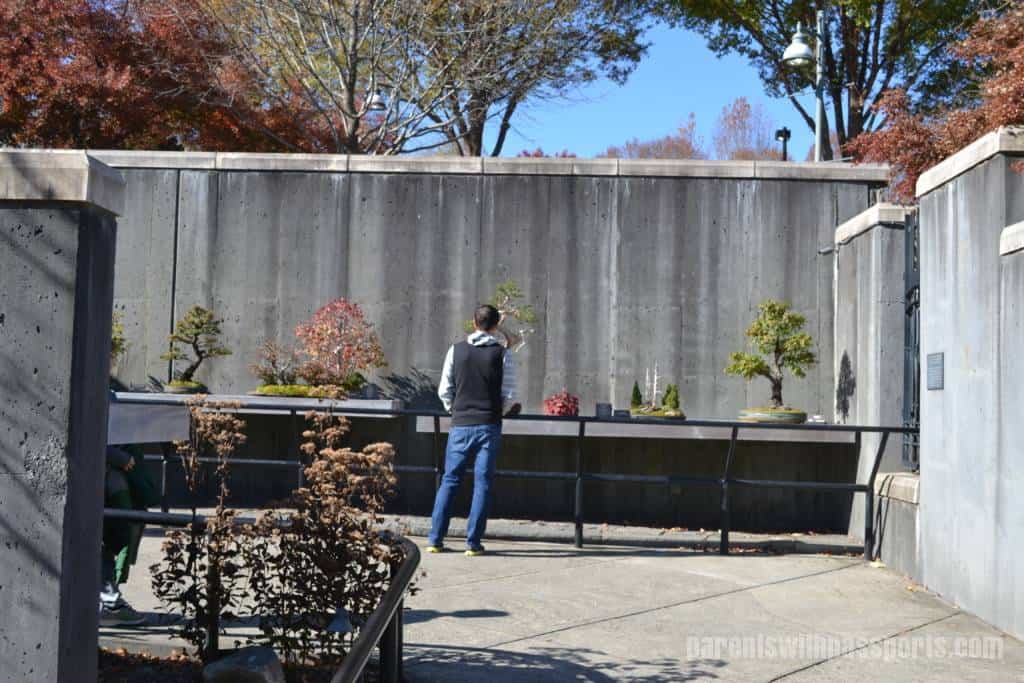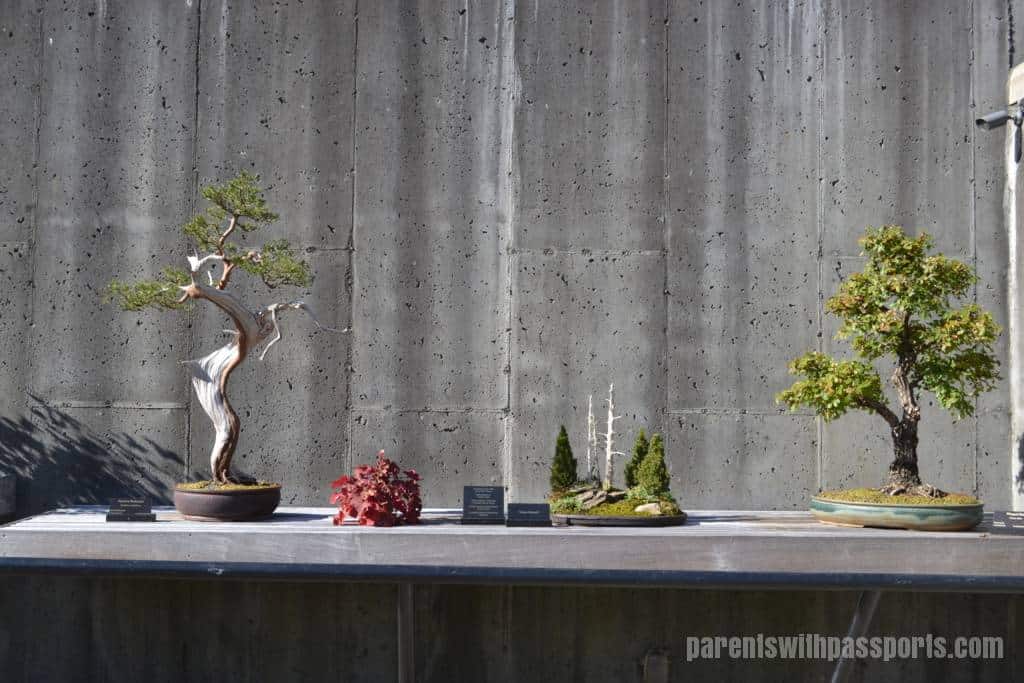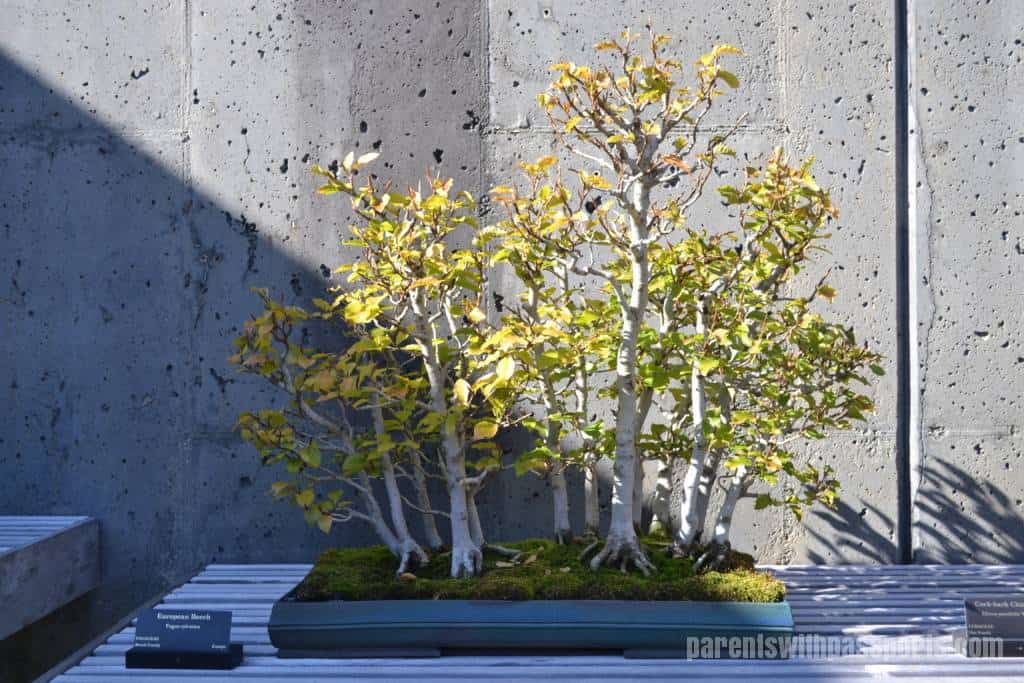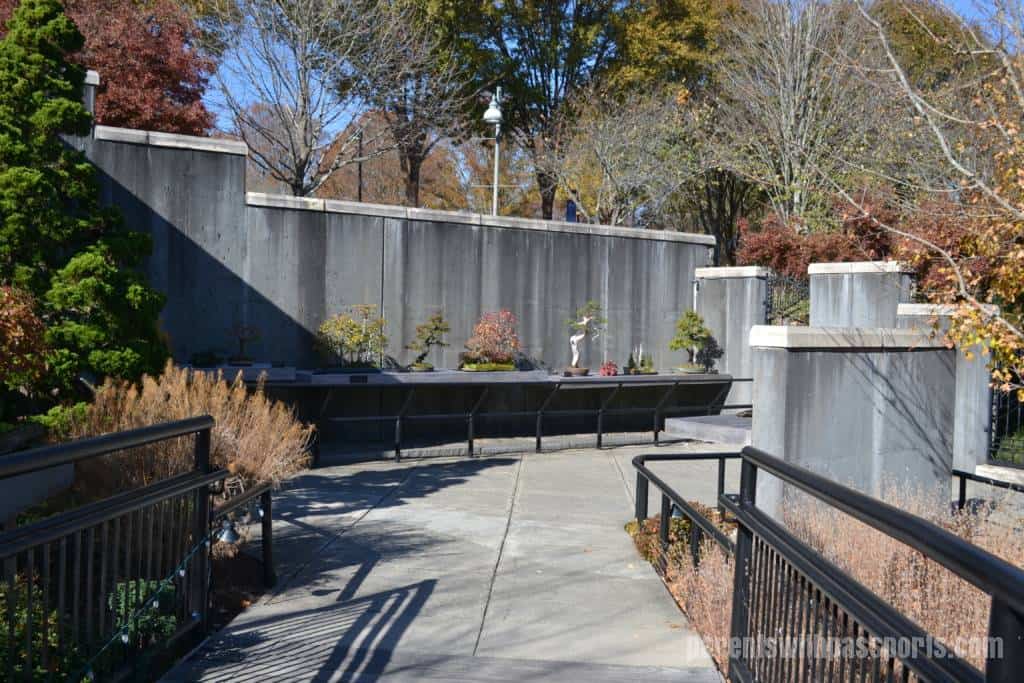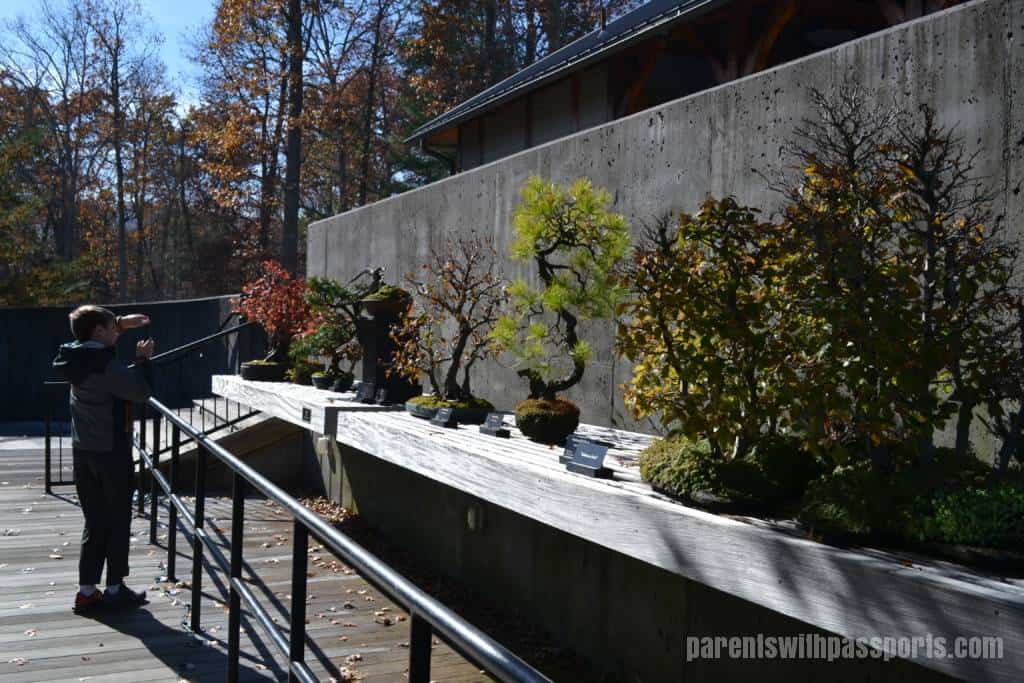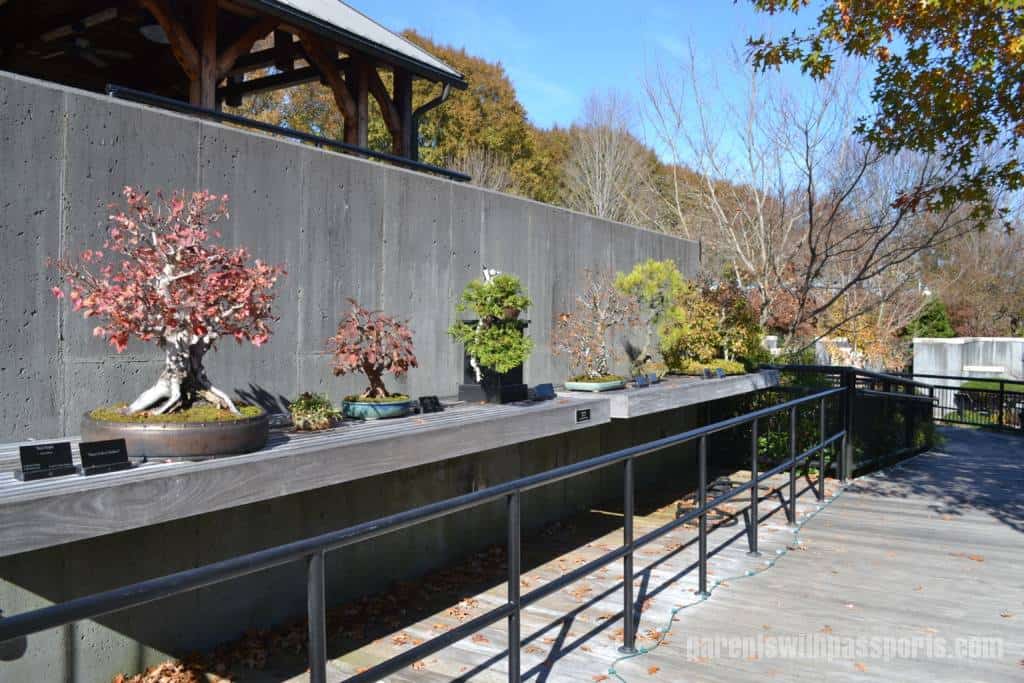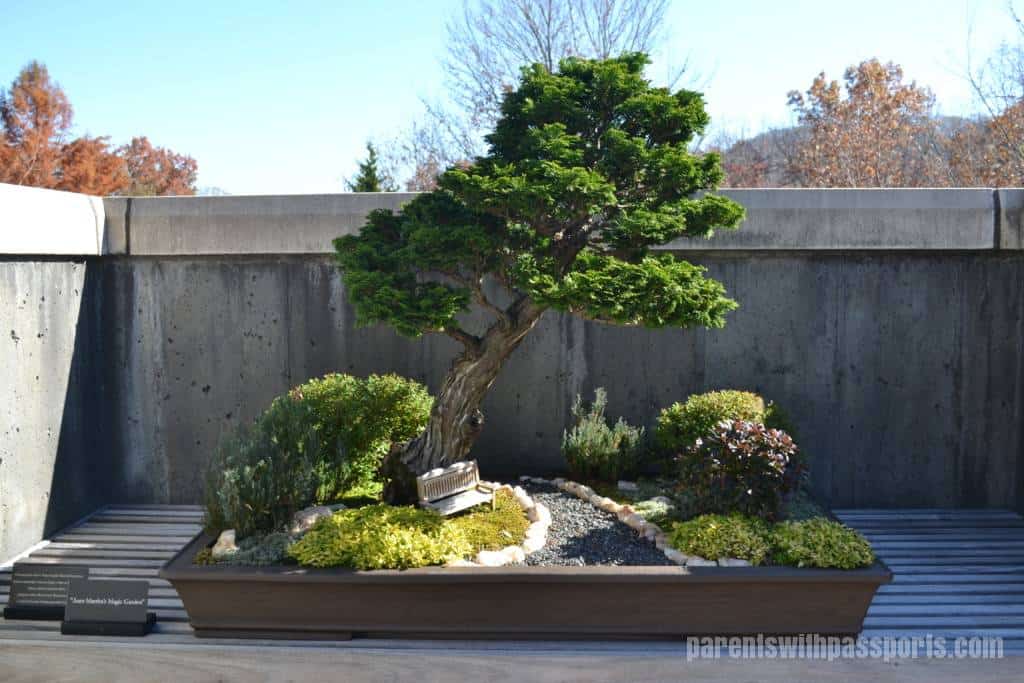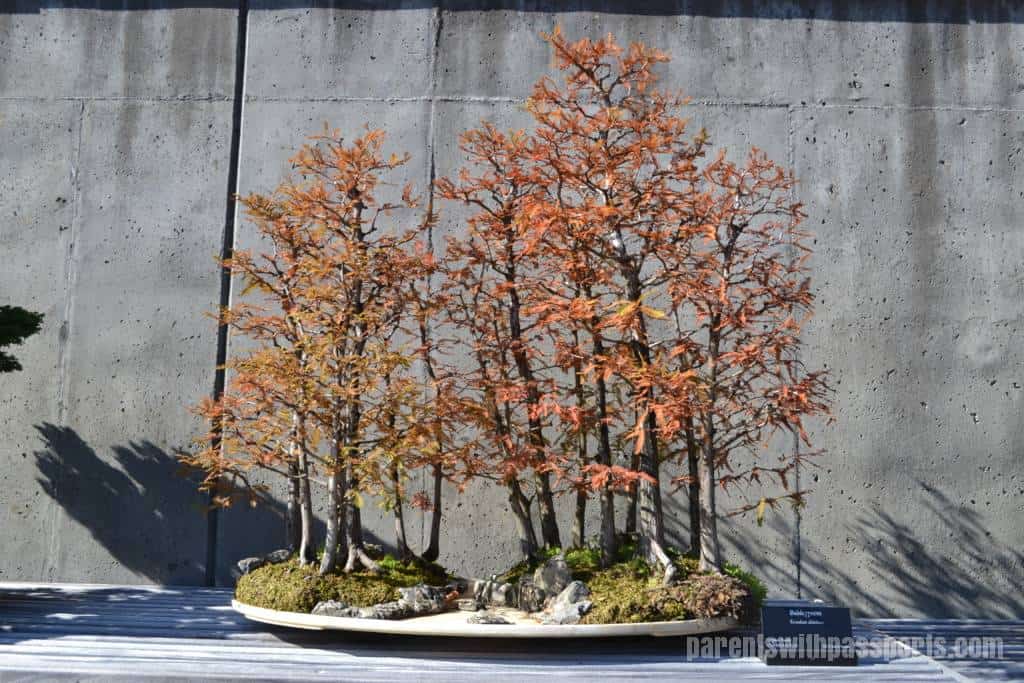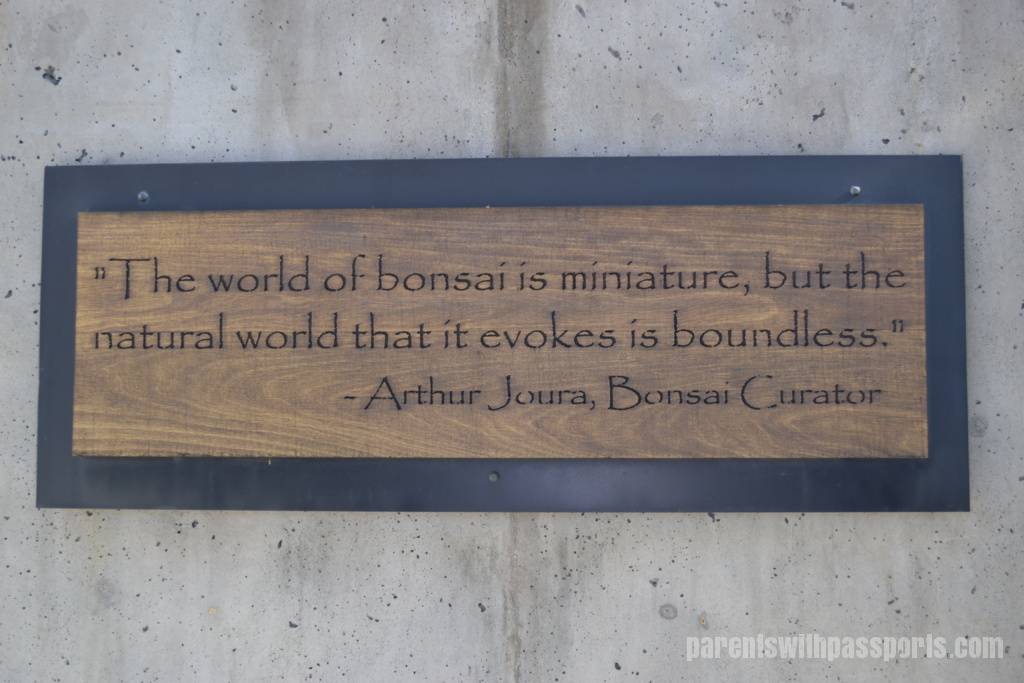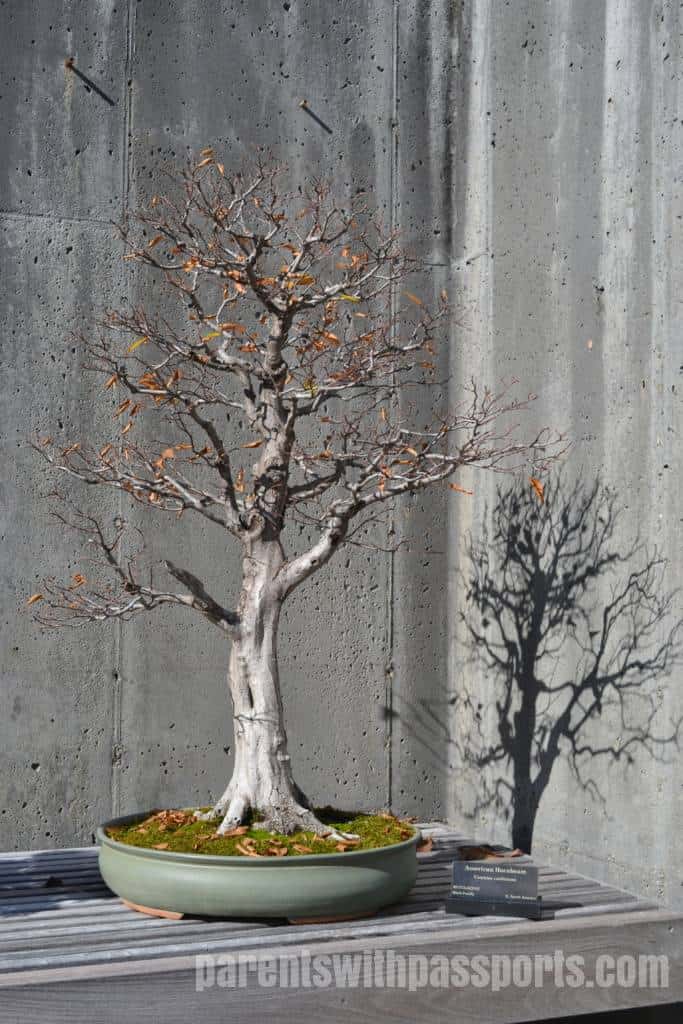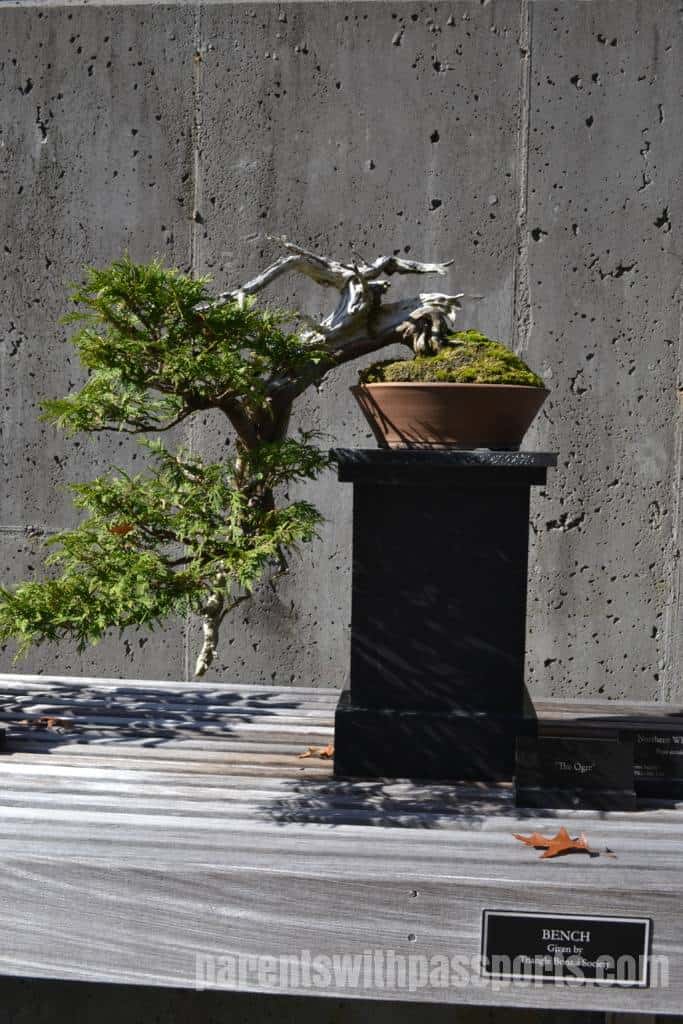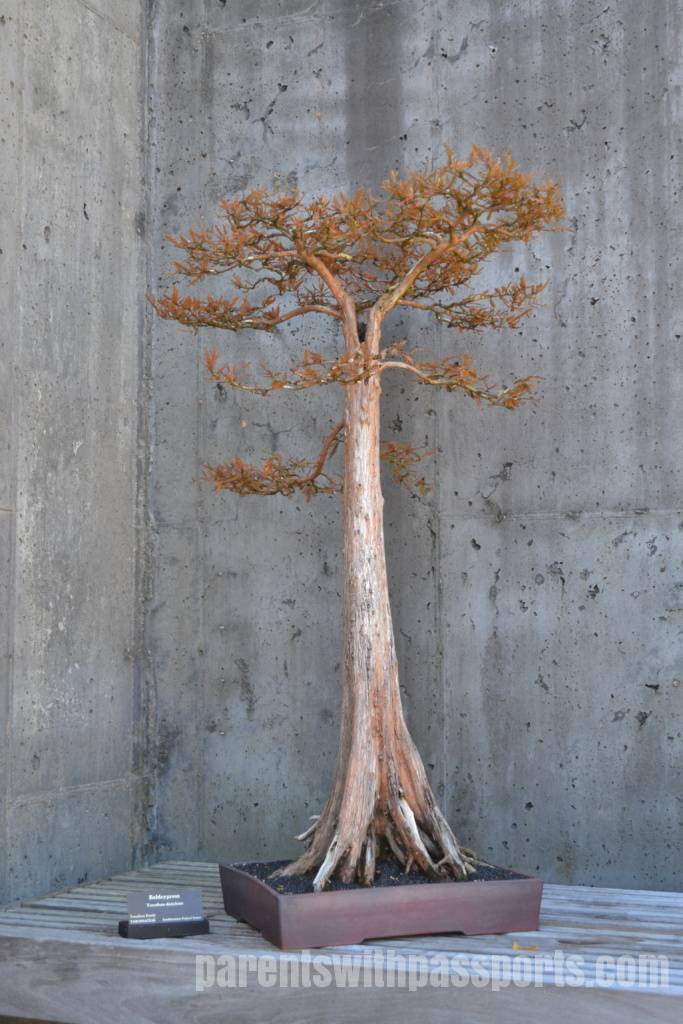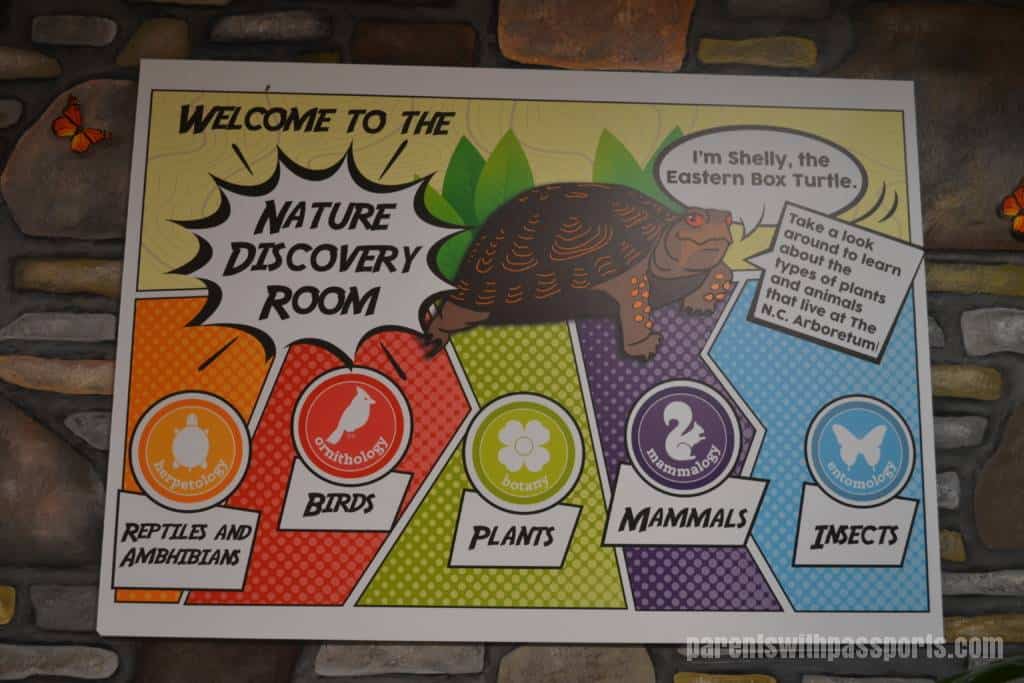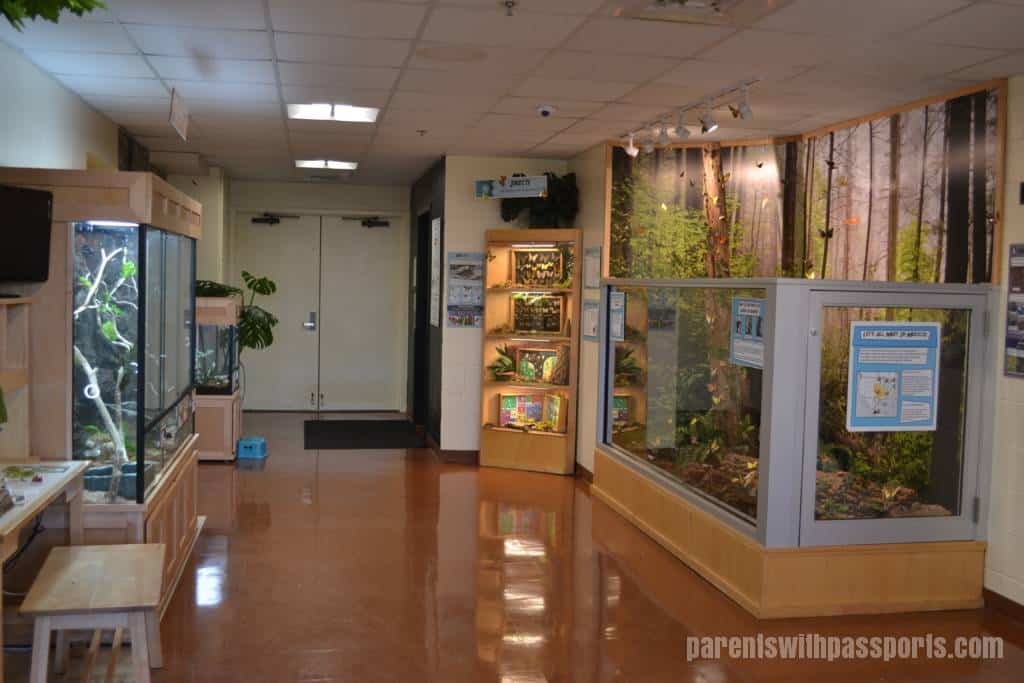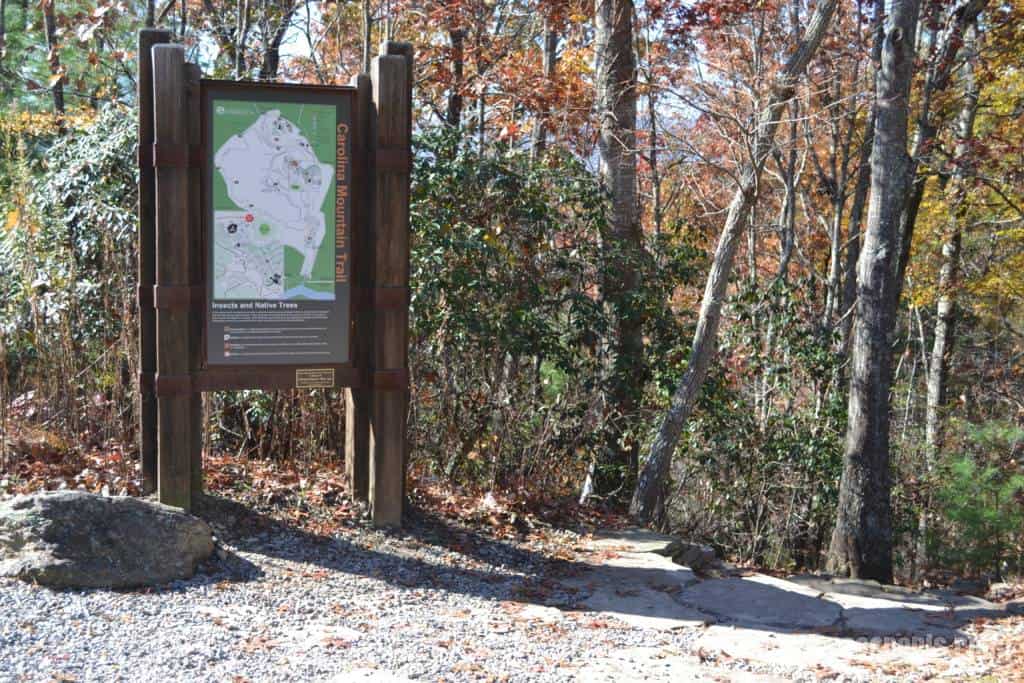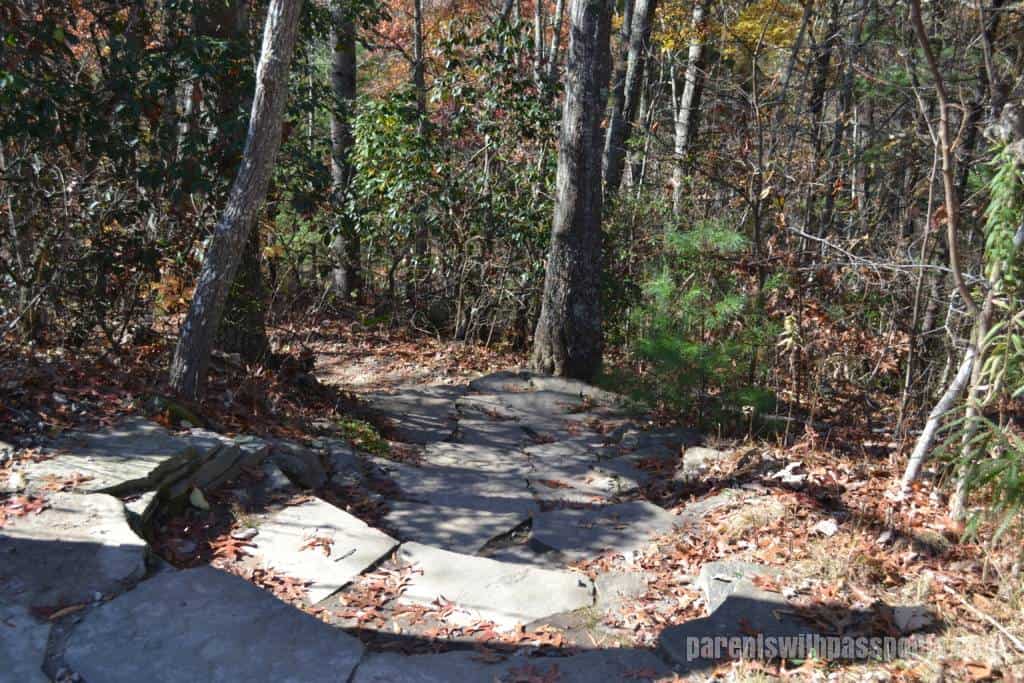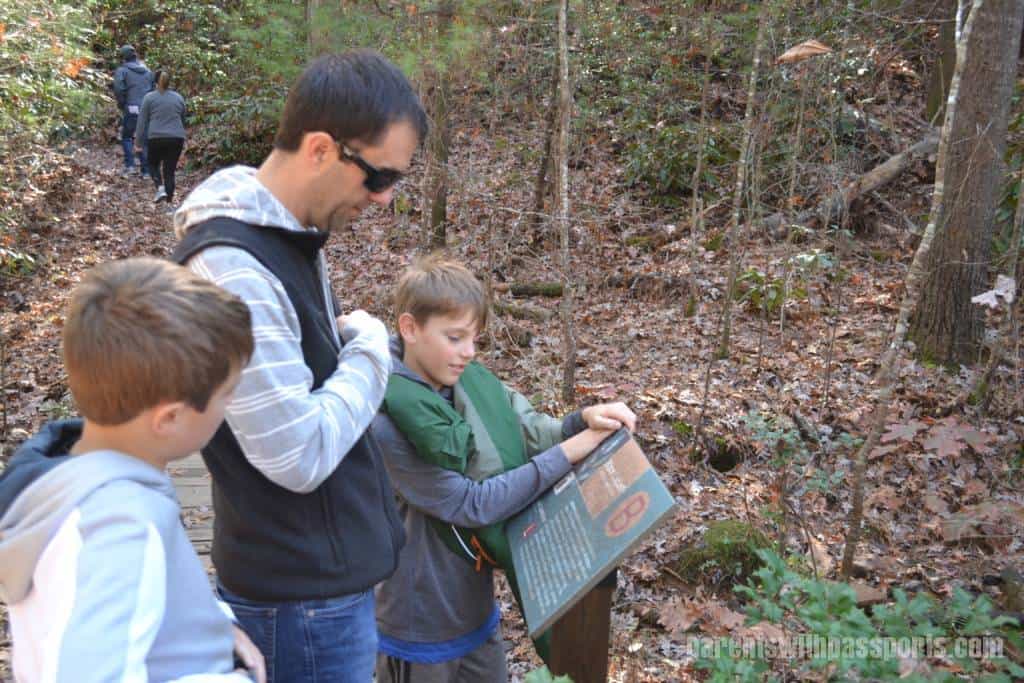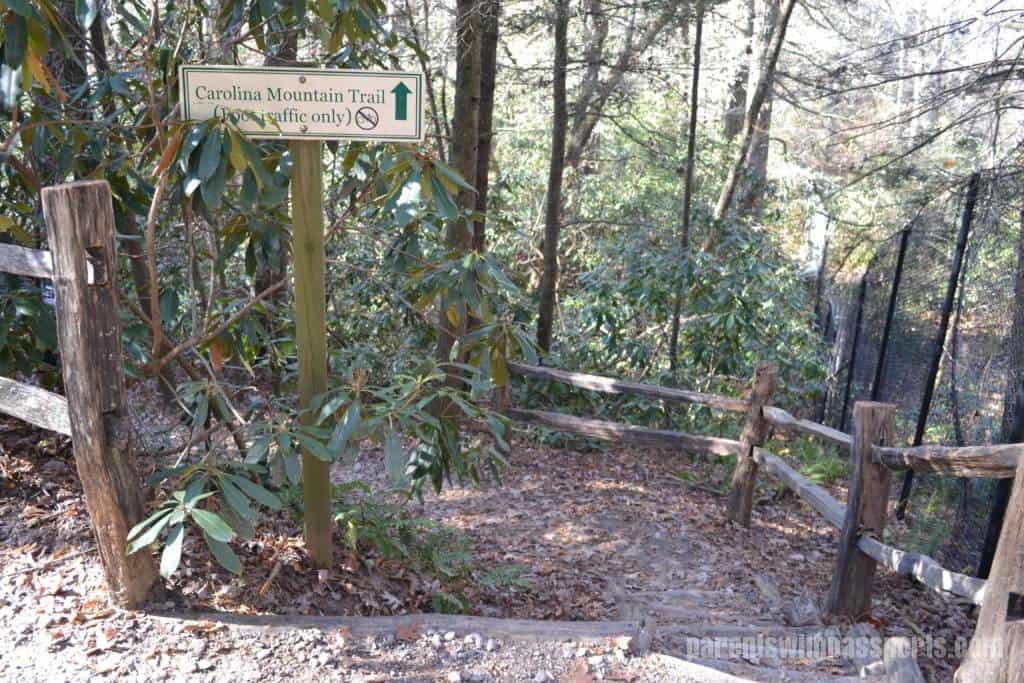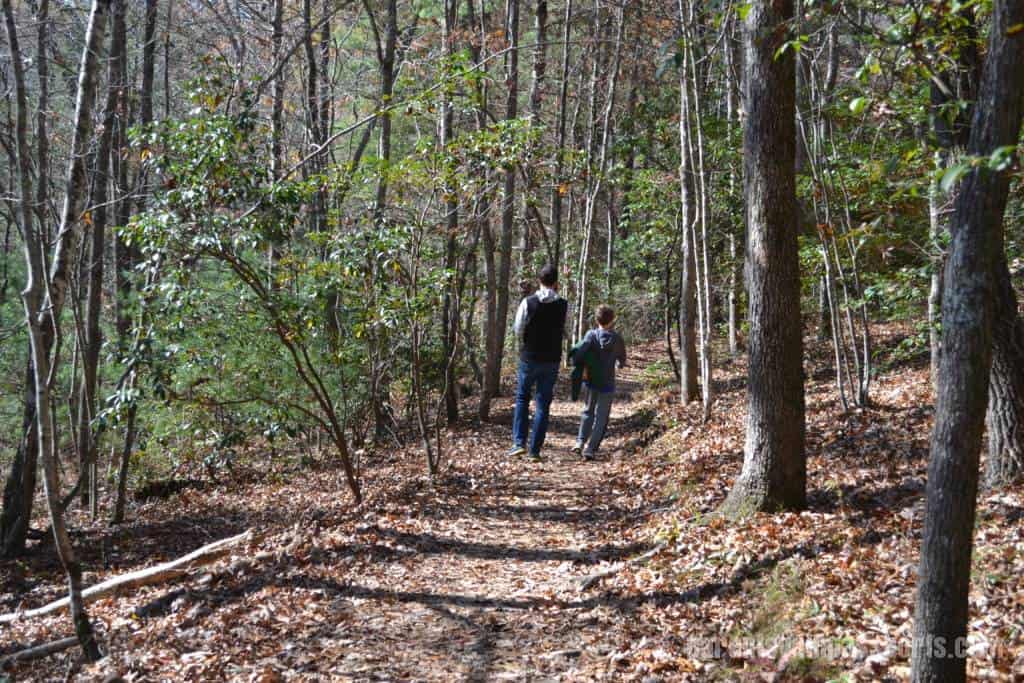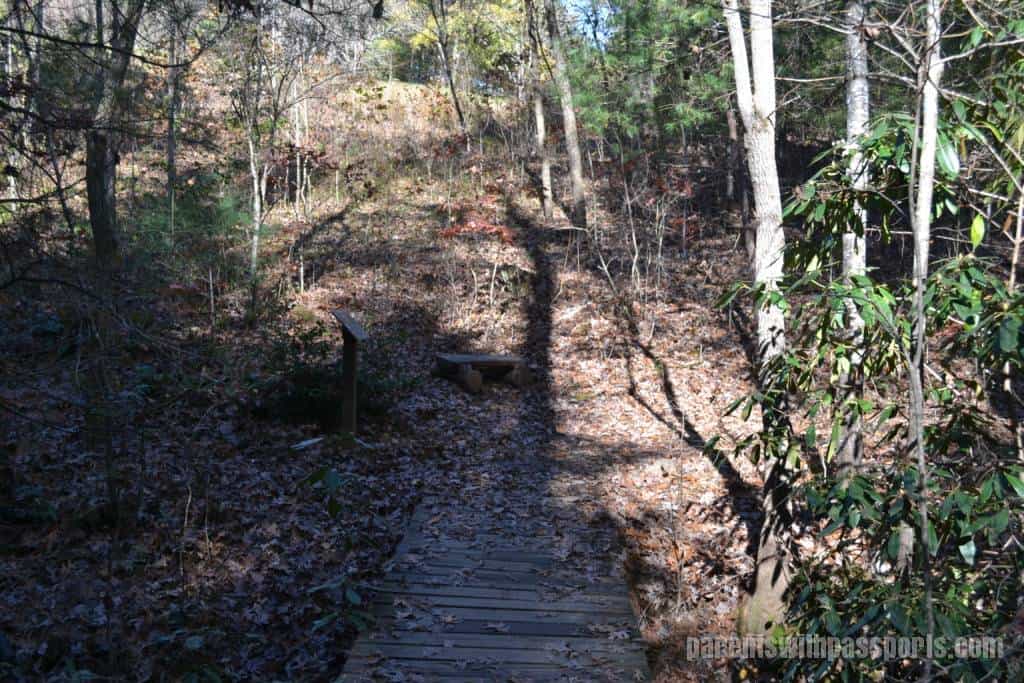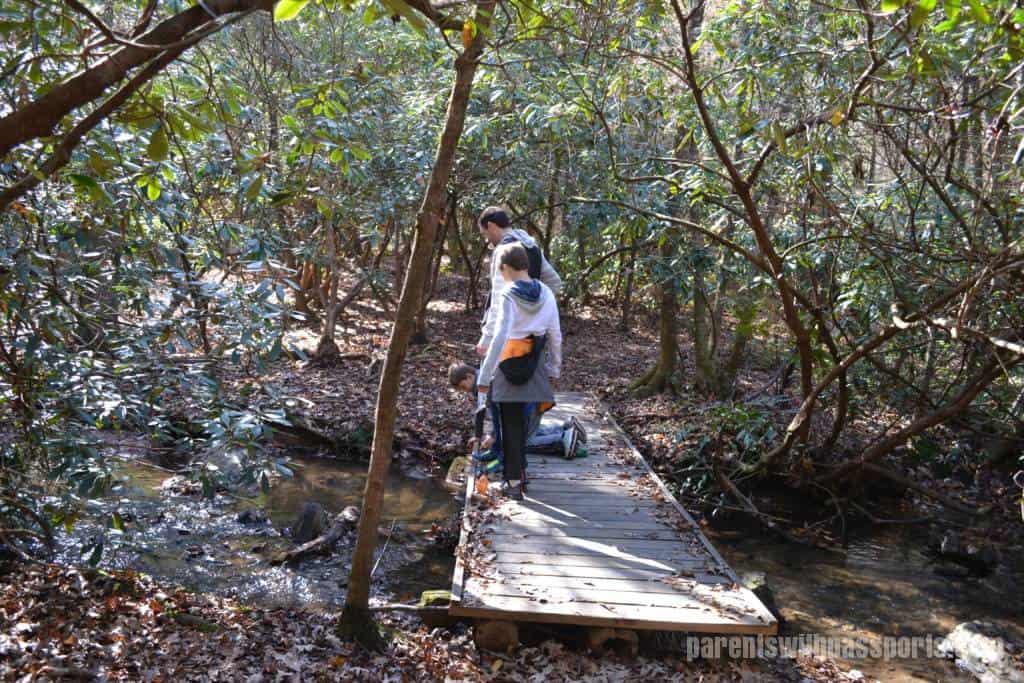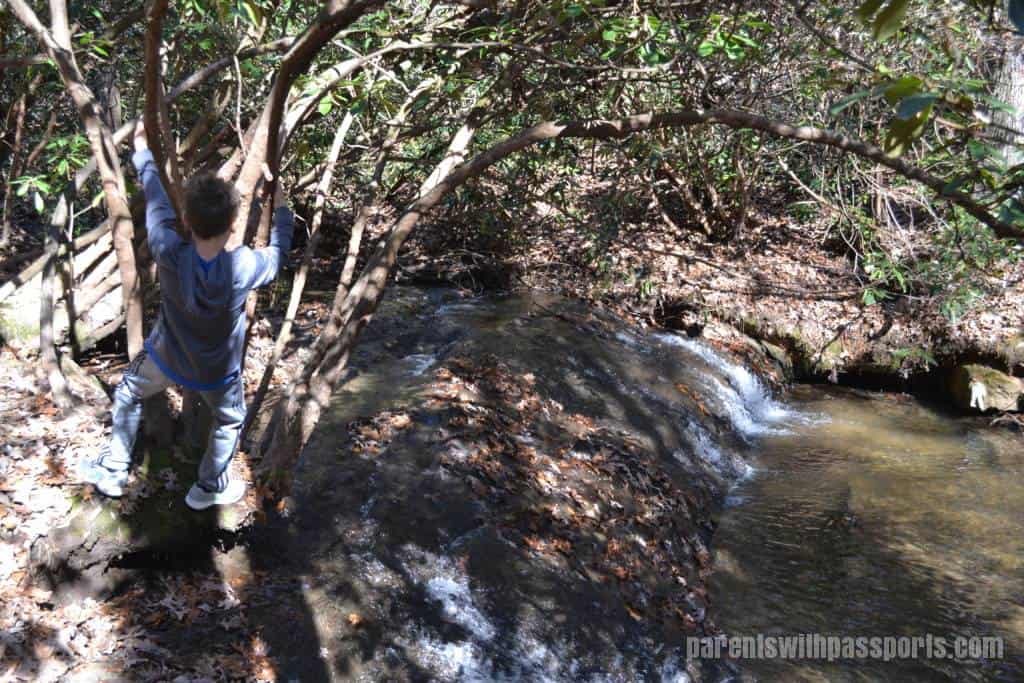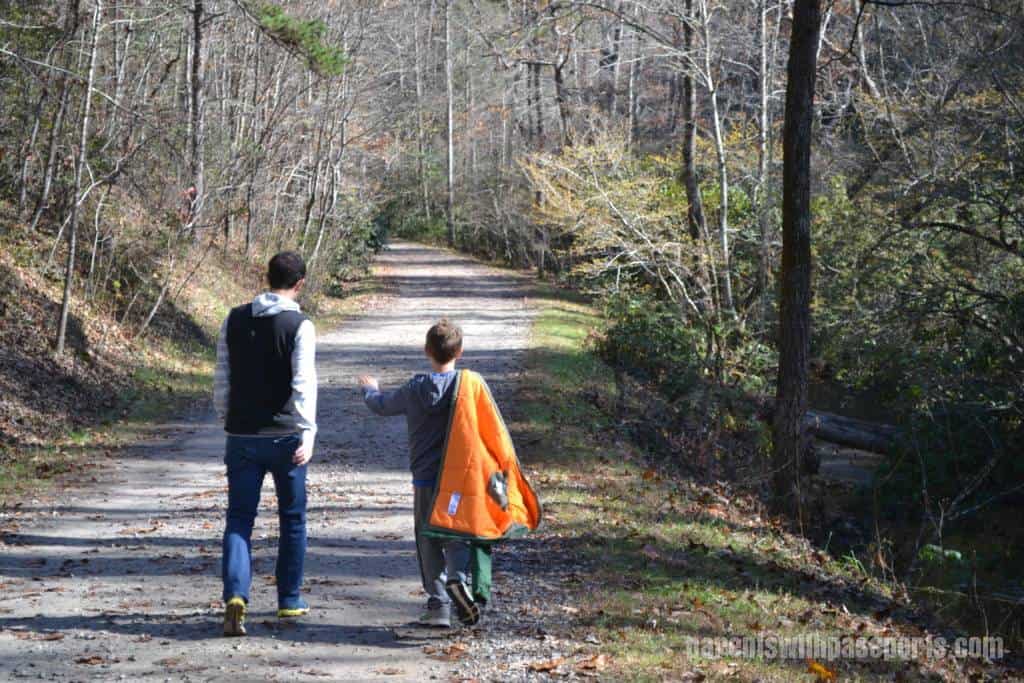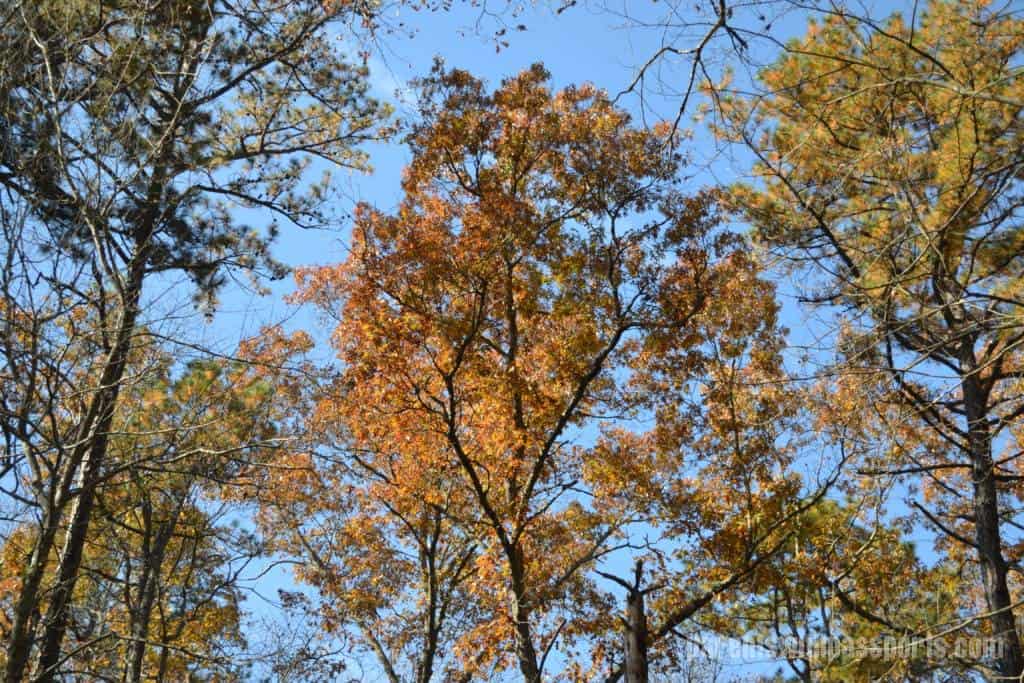We turned our visit to the Biltmore House Christmas Lights into a weekend away in Asheville. We explored the River Arts District, visited the Pinball Museum, and tried some new restaurants. Despite a full Saturday, we wanted to do one more outing before hitting the road on Sunday and decided to check out the North Carolina Arboretum.
The NC Arboretum is a 434 acre public garden located in the Pisgah National Forest. It offers 65 acres of gardens, more than 10 miles of hiking and biking trails, a bonsai exhibit, and much more. While we were there they were putting up their holiday light displays for the annual Winter Lights at The NC Arboretum, which opens the weekend before Thanksgiving each year. Entrance to the arboretum is $14 per car and gives you access to all of the year-round activities. (The holiday light exhibit charges an additional per-person fee.)
We entered the Baker Exhibit Center, where a very helpful staff member shared a map and suggested hiking routes for us. We had to walk upstairs to enter the gardens and passed through the traveling exhibit, Tree Houses. Geared towards younger kids, this was a small but well-done exhibit exploring the creatures that live in trees.
Right outside the Baker Exhibit Center is the Baker Landscape, a central lawn area surrounded by flowers lining the edge of the woods. (Note the sign warning of venomous snakes in the area and stay on the path!) This area was already decorated for the winter lights exhibit already and looked impressive even during the day time.
From there we strolled down the Grand Garden Promenade before veering off to the right to enter the main garden area, which housed the Heritage Garden, Quilt Garden, and Stream Garden.
The Heritage Garden is built as a small replica of an old homestead site and features plants used in traditional Western North Carolina crafts and medicines.
The Quilt Garden is probably one of the arboretum’s most impressive features… but not in the winter. In season, the garden blooms take the shape of a traditional quilt pattern. In late fall, it is nothing more than a series of dirt squares, but we could see that they were setting up holiday lights in square patterns over the plots. The garden has an elevated stone overlook where you can take in the pattern (whether made of flowers or lights) from a bird’s eye level.
The last garden is the Stream Garden. A manmade stream flowed through the middle, and typical regional plant life lined its banks. (And is that a native bird living along the stream?)
Back across the promenade, we went to check out the miniature train. The staff member who helped us plan our morning at the gardens was very disappointed to tell us that the train was not currently running. We assumed this was a small train that you could actually ride on (like a preschool kids’ theme park ride) that went around the arboretum grounds. We had to laugh when we saw how “miniature” it really was!
The Bonsai Exhibition Garden was fantastic. The exhibit is world renowned and unique for its regional interpretation. Using plants native to the Western North Carolina area, artists cultivate and trim the plants into a unique and artistic design. We really enjoyed walking through the displays and seeing the large variety of plants and designs.
After thoroughly exploring (and enjoying!) the bonsai exhibit, we walked through the Education Center before heading out on our hike. We were told that there was a Nature Discovery Room in this building that was good for kids. It was indeed just a room, and a small one at that. There were a few live animals to check out and some small educational displays. A toddler or preschooler might enjoy it but there wasn’t much to it at all.
Behind the Education Center is a trailhead for the Carolina Mountain Trail. There are 12 hiking trails in the arboretum, including 5 easy, 4 moderate, and 3 difficult rated trails. All trails are dog-friendly and several of them double as biking trails. (Non-biking trails are clearly marked as “Foot Traffic Only”.)
The Carolina Mountain Trail is one of the moderate trails. The 1.2 mile trail passes through three different types of forests – pine, mixed hardwood, and ericaceous. There were informative signs along the way, and our 4th grader especially enjoyed reading the ones that quizzed you on symbiotic relationships, which is what he has been learning about in science class. (You’ve gotta love it when they can apply what they learn in the classroom to the real world!)
The path led us through the woods, which was pretty at this time of year with some of the trees still hanging on to their fall colors. At one point it met up with the Bent Creek Trail, and you could choose to follow the trail along the creek or walk along the road. The trail had a few moderate, rolling hills but was mostly flat and easy.
We got slightly turned around at the end of the trail. We came to a sign with arrows pointing straight ahead for Running Cedar Road, Gardens, and Visitor Education Center. A little bit after that, the trail split into 3 with no indications of which path lead to which destination from the earlier sign. In retrospect, I think all 3 trails basically led to the same place, but it definitely stressed my oldest out when he thought we didn’t know which way to go. We were finally able to hear and then see kids playing outside the Visitor Education Center (in the aptly named Playing Woods) and followed the path in that direction to get back to where we started.
We were really impressed with the arboretum. We were definitely in the off-season – nothing was really in bloom like in spring and summer, the fall leaves were hanging on in just a few trees, and the winter lights hadn’t quite started up yet. But we still loved our visit. The gardens were neat to explore, even when not in full bloom. The bonsai exhibit was fantastic. And the trails were perfect for a short hike on a crisp late fall day. We chose this outing at the last minute without much prior research, and it turned out to be the perfect way to spend our last morning in Asheville.
